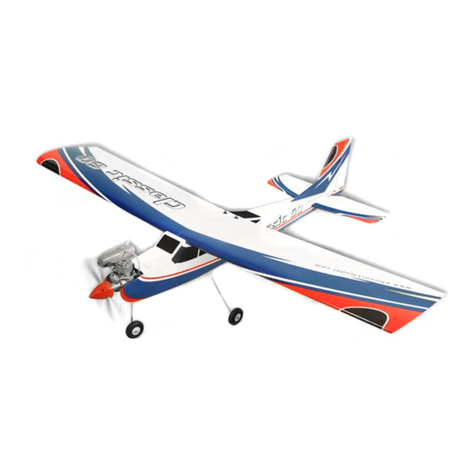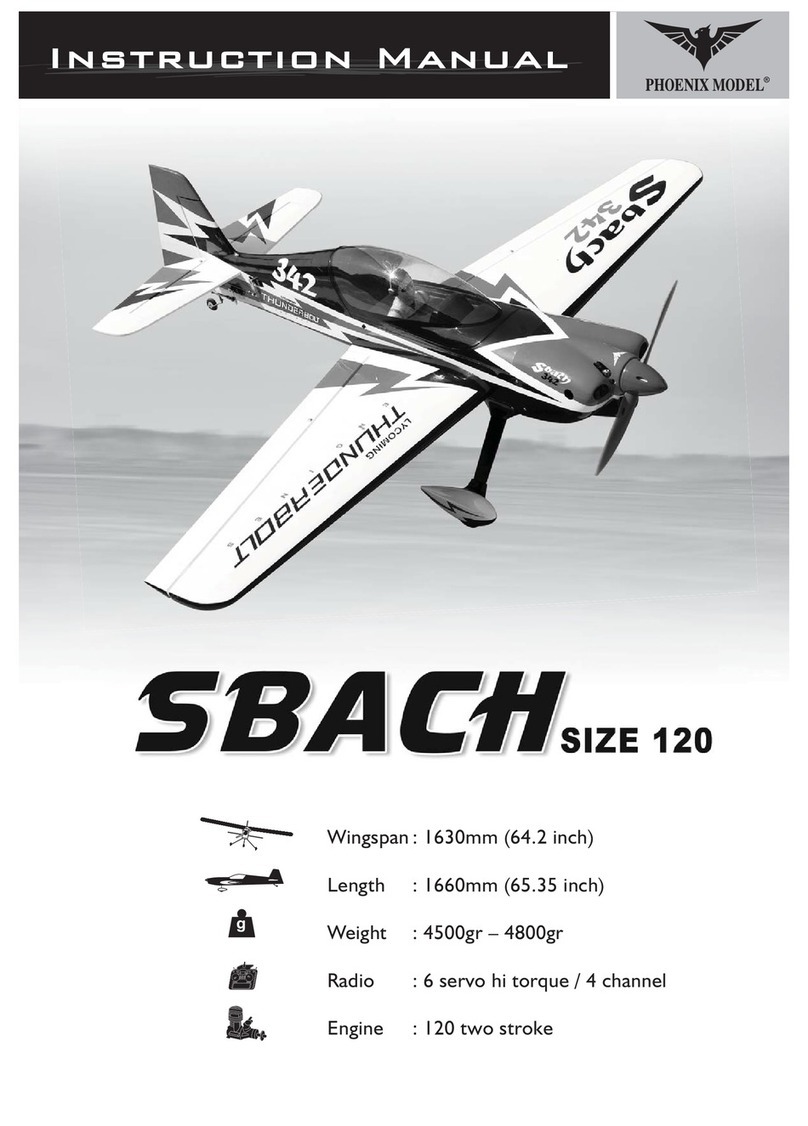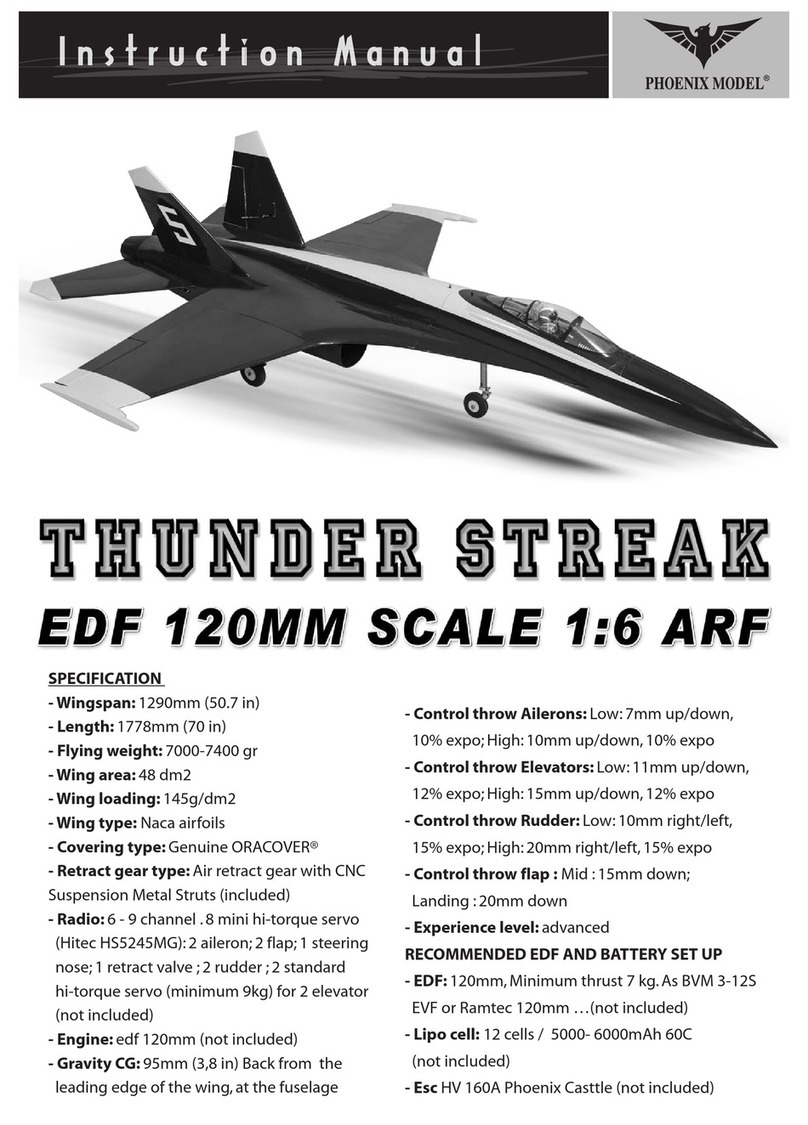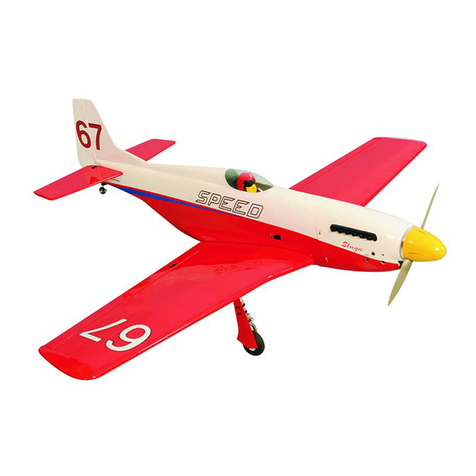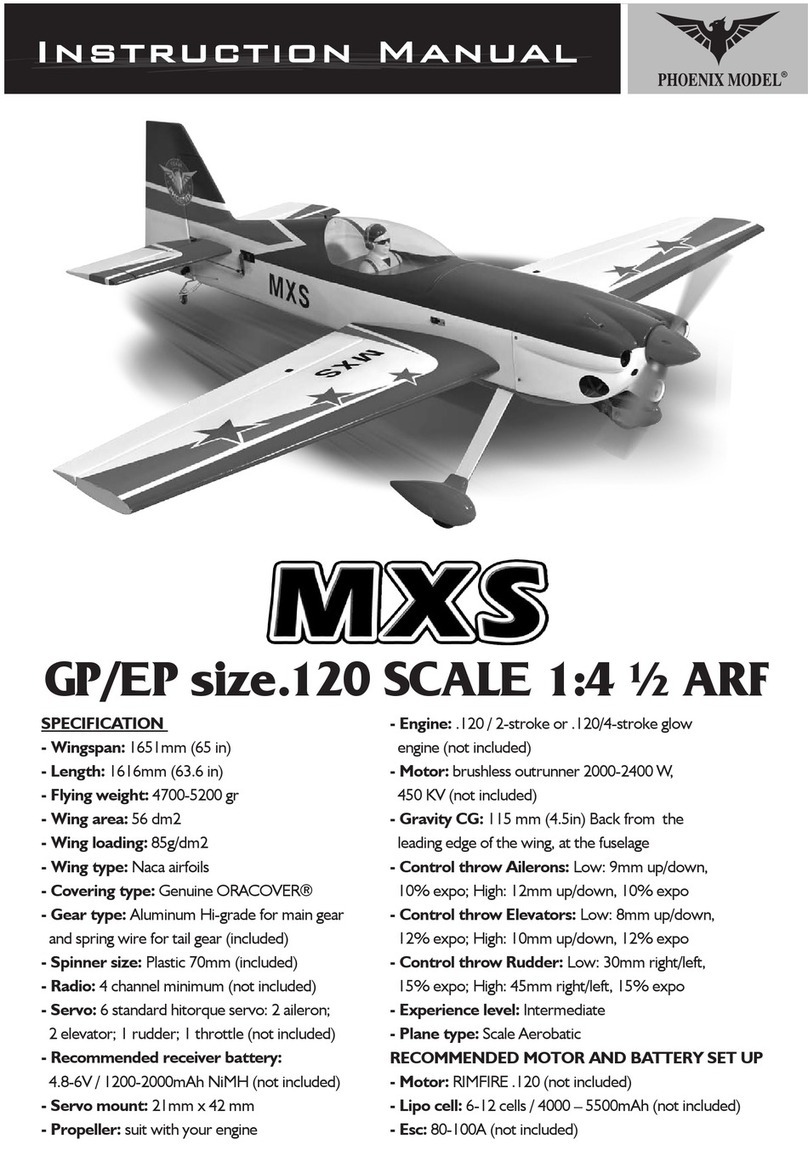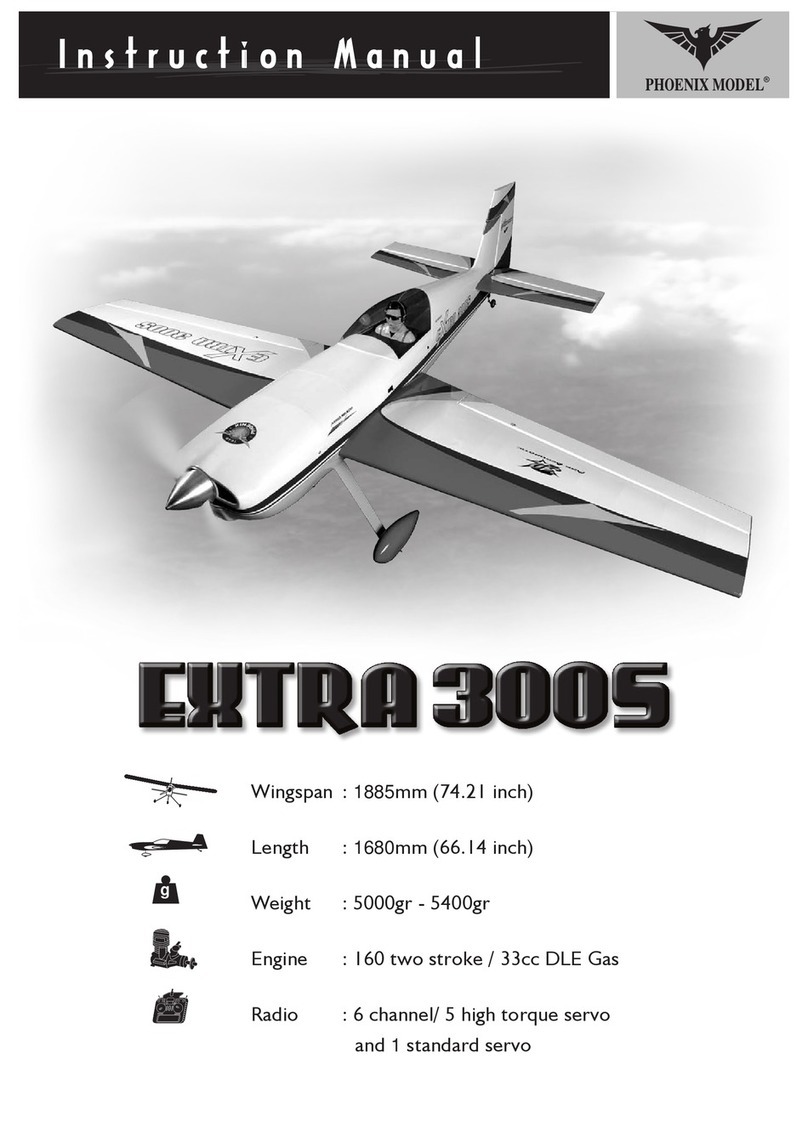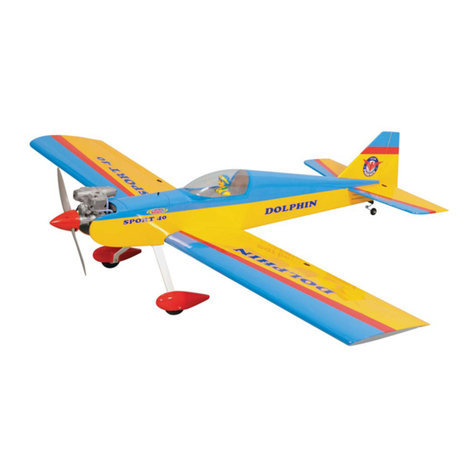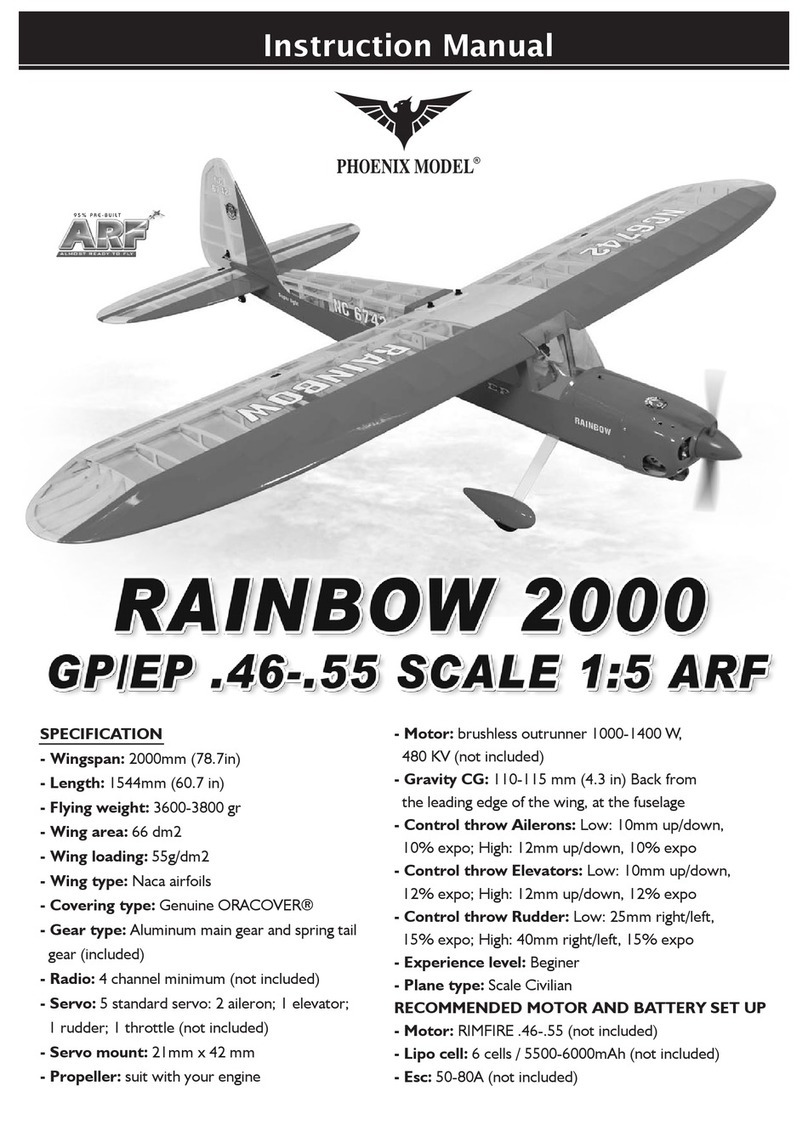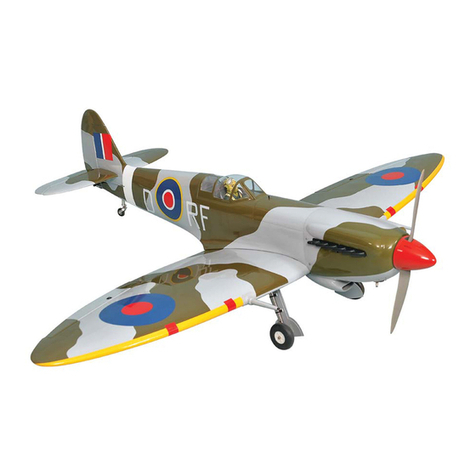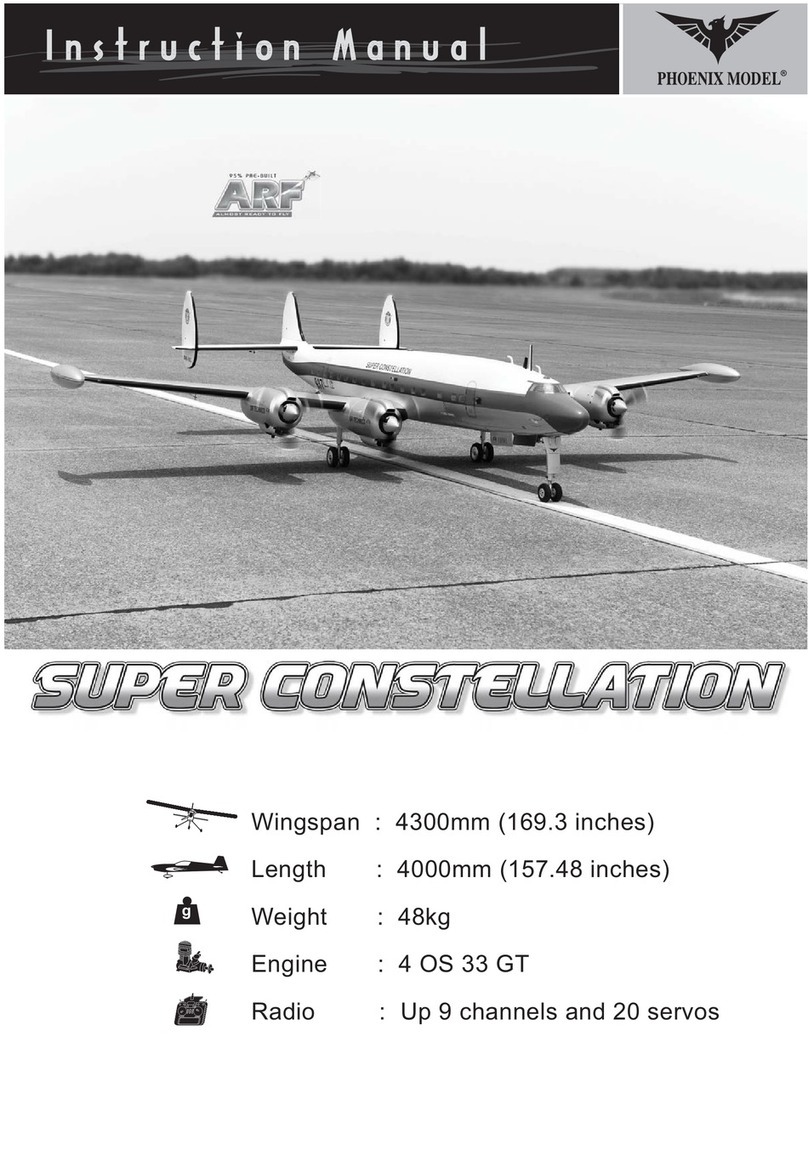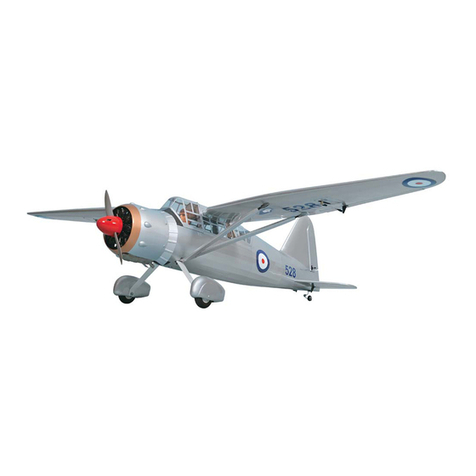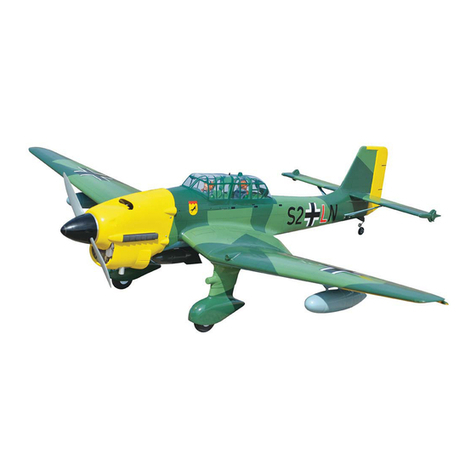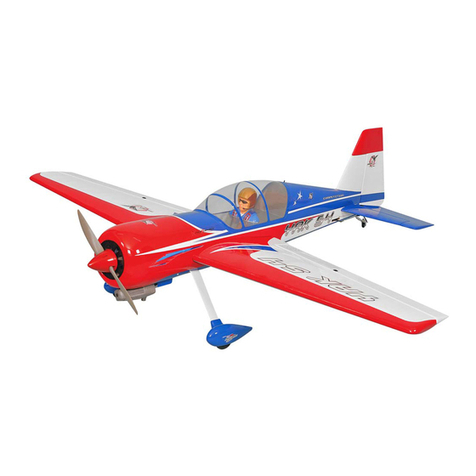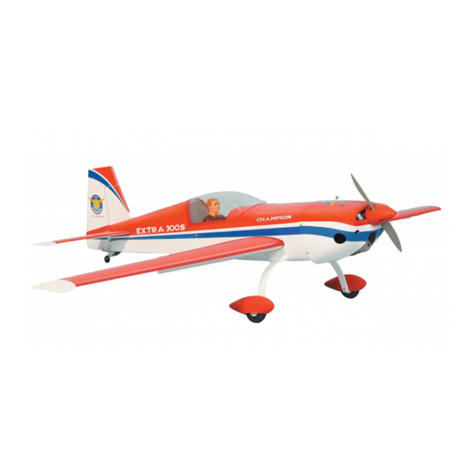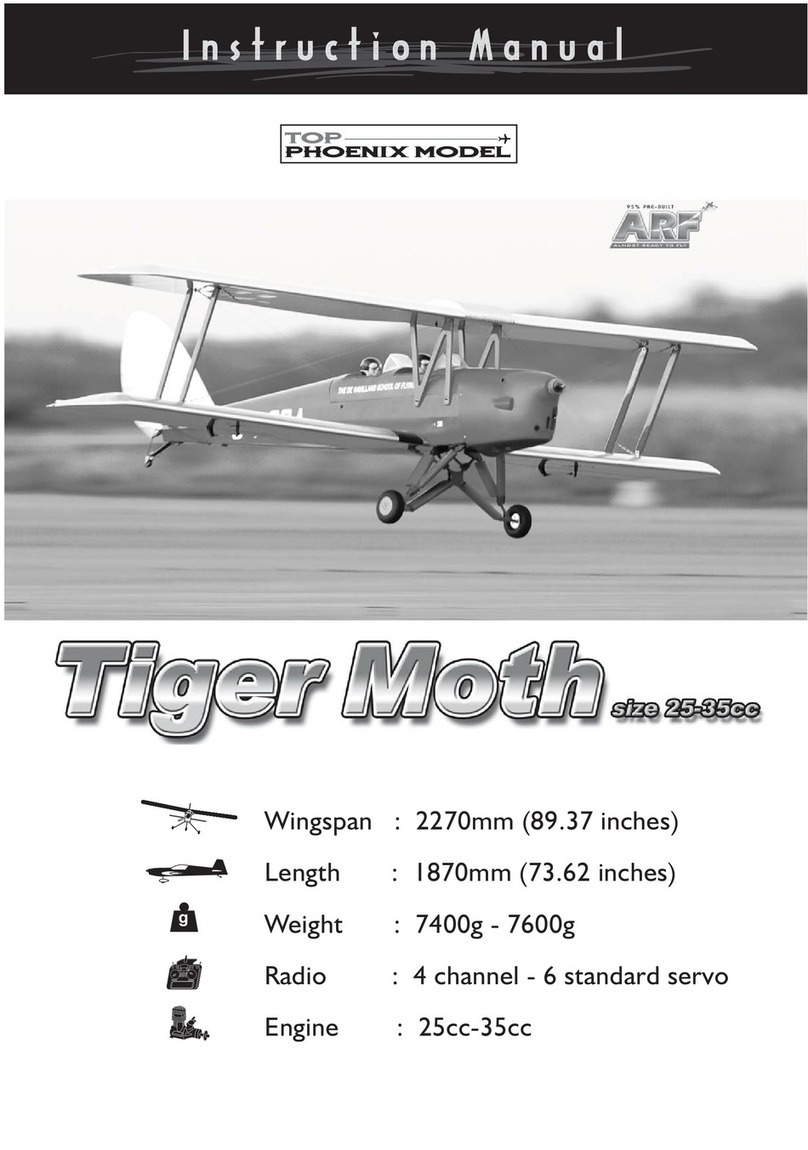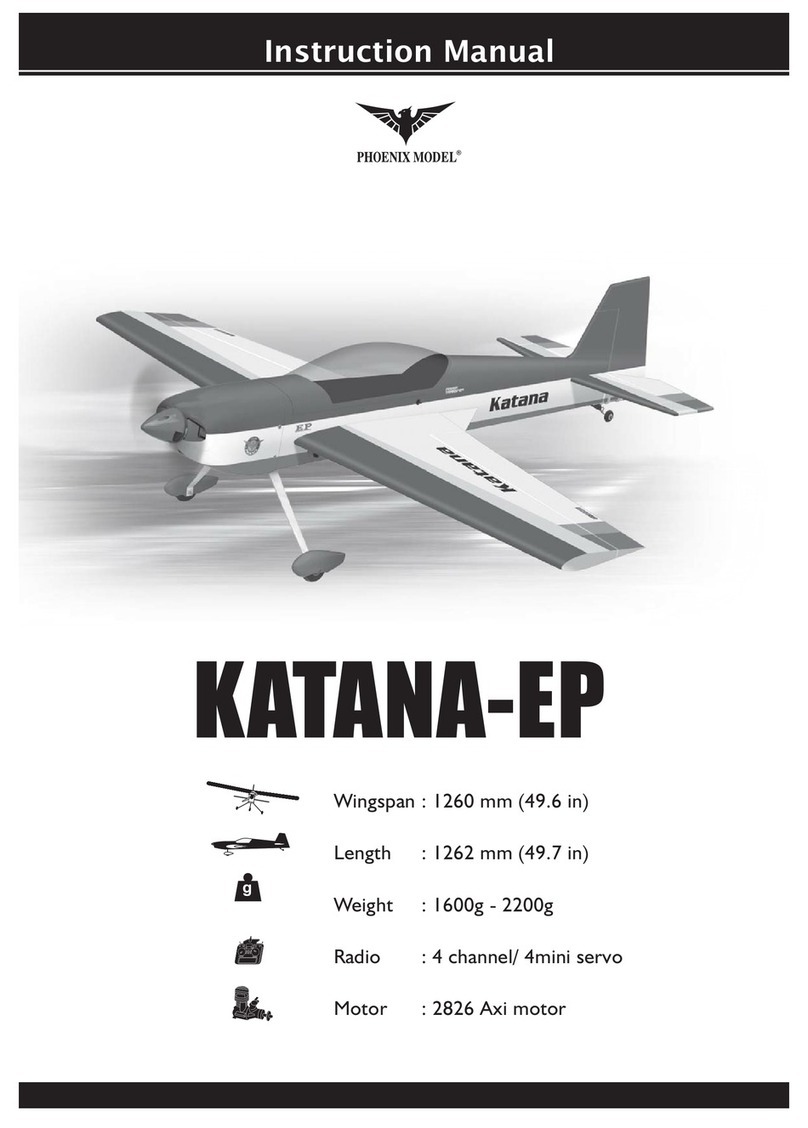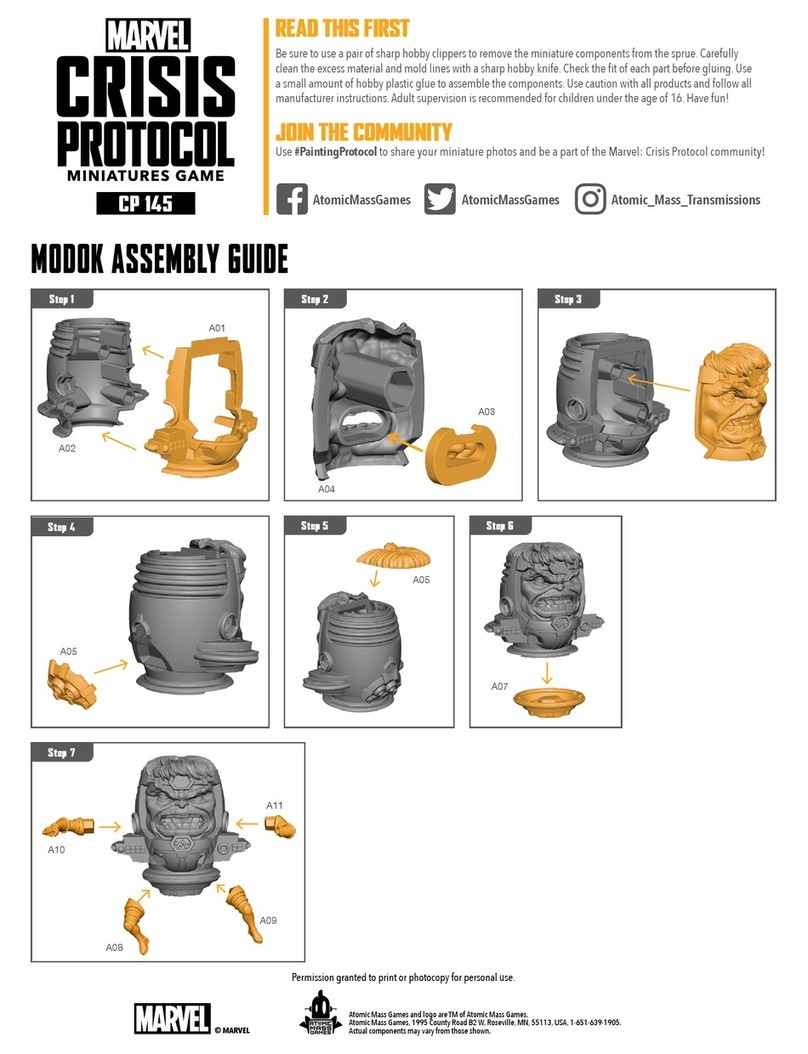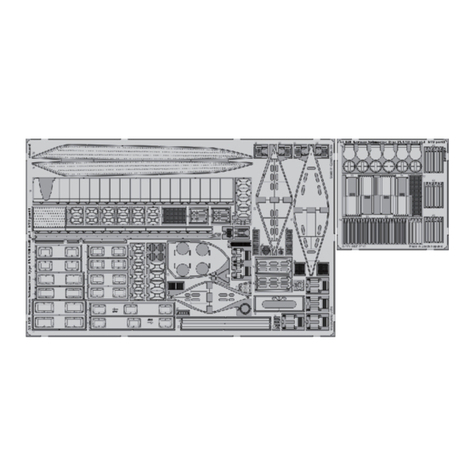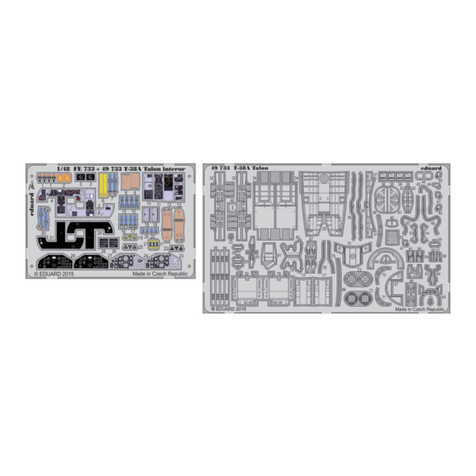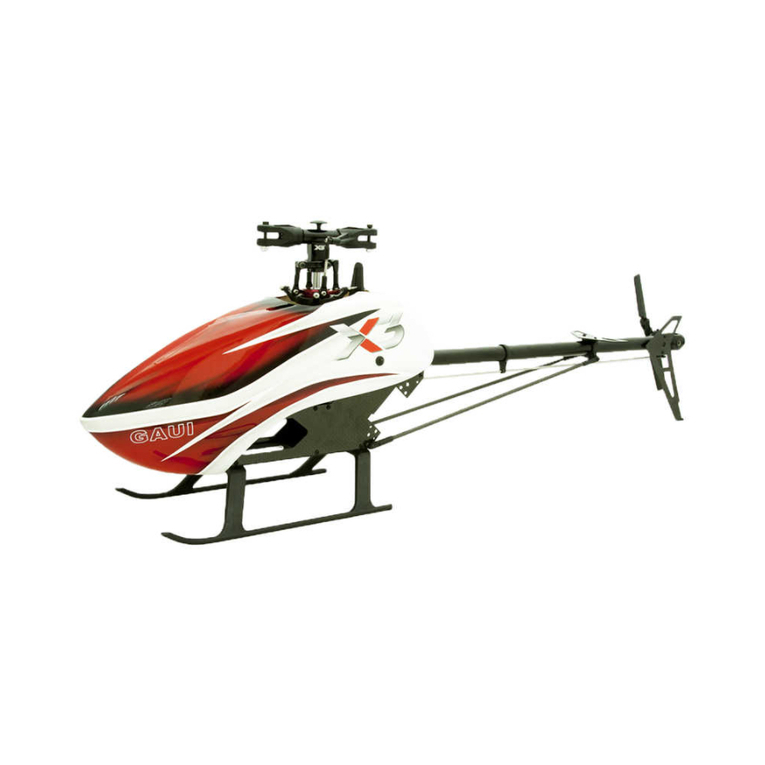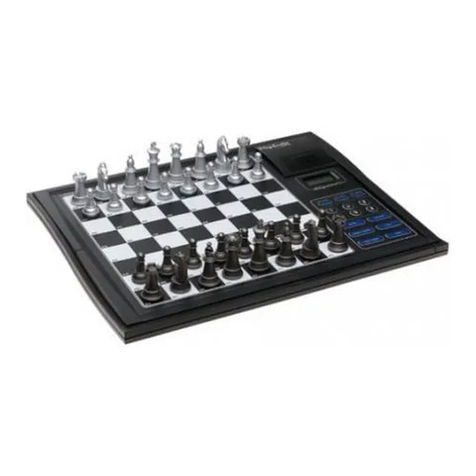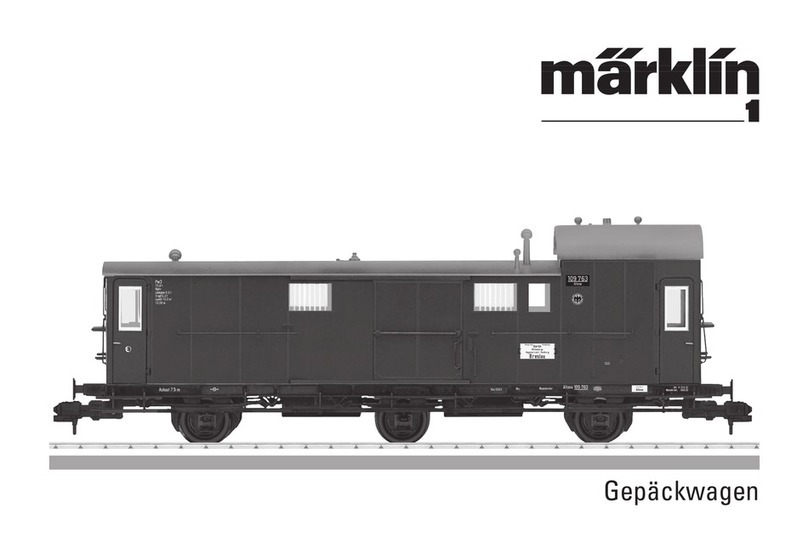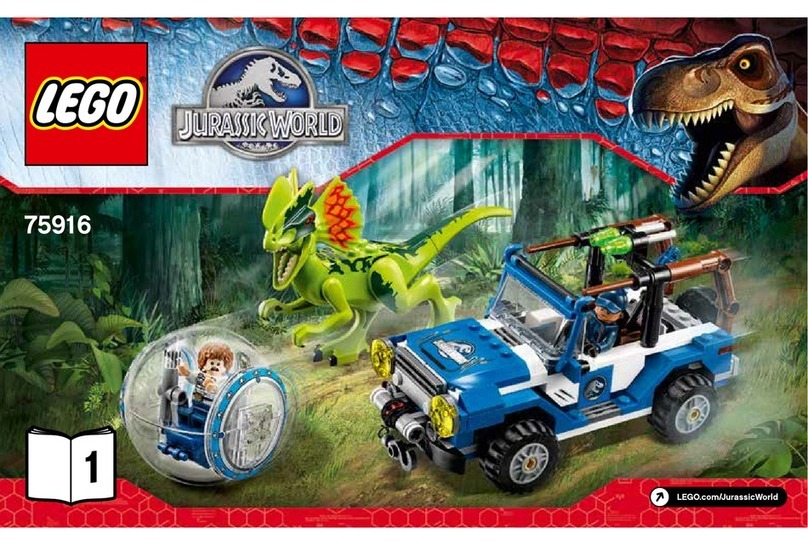!
BALANCING
1. It is critical that your airplane be balanced correctly.
Improper balance will cause your plane to lose
control and crash.
THE CENTER OF GRAVITY IS LOCATED 75 - 80mm
BACK FROM THE LEADING EDGE OF THE WING,
AT THE FUSELAGE.
2. Mount the wing to the fuselage. Using a couple of
pieces of masking tape, place them on the top side of
the wing 75 - 80mm back from the leading edge, at the
fuselage sides.
3. Turn the airplane upside down. Place your fingers on
the masking tape and carefully lift the plane .
4. If the nose of the plane falls, the plane is heavy nose.
To correct this first move the battery pack further
back in the fuselage. If this is not possible or does not
correct it, stick small amounts of lead weight on the
fuselage under the horizontal stabilizer. If the tail of
the plane falls, the plane is tail heavy. To correct this,
move the battery and receiver forward or if this is not
possible, stick weight into the firewall. When balanced
correctly, the airplane should sit level or slightly nose
down when you lift it up with your fingers.
LATERAL BALANCE
After you have balanced a plane on the C.G. You
should laterally balance it. Doing this will help the
airplane track straighter
CONTROL THROWS
1. We highly recommend setting up a plane using the
control throws listed.
2. The control throws should be measured at the widest
point of each control surface.
3. Check to be sure the control surfaces move in the
correct directions.
1. Turn the airplane upside down. Attach one loop of
heavy string to the eng ine crankshaft and one to the
tail wheel wire. With the wing s level, carefully lift
the airplane by the string. This may require two
people to make it easier.
2. If one side of the wing fall, that side is heavier than
the opposite. Add small amounts of lead weight to
the bottom side of the lighter wing half's wing tip.
Follow this procedure until the wing stays level
when you lift the airplane.
75 - 80mm
Ailerons : 12mm up 12mm down
Elevator: 12mm up 12mm down
Rudder : 15mm right 15mm left
Elevator Control
Aileron Control
12mm
12mm
Rudder Control
15mm
15mm
12mm
12mm
FLIGHT PREPARATION PRE FLIGHT CHECK
1. Completely charge your transmitter and receiver
batteries before your first day of flying.
2. Check every bolt and every glue joint in your plane
to ensure that everything is tight and well bonded.
3. Double check the balance of the airplane
4. Check the control surface
5. Check the receiver antenna . It should be fully
extended and not coiled up inside the fuselage.
6. Properly balance the propeller.
12
KIT CONTENTS: We have organized the parts as they come out of the box for better identification
during assembly. We recommend that you regroup the parts in the same manner. This will ensure you
have all of parts required before you begin assembly
KIT CONTENTS
Air frame assembly
(2) Wing
(1) Fuselage
(1) Horizontal
(1) Vertical
(1) Instruction manual
Main gear assembly
(2) Main gear
(2) 50mm wheel
(4) Collar
(4) 3mm x 4mm screw
(2) Nylon clasp
(4) 3mm x 12mm screw
Nose gear assembly
(1) Nose gear
(1) 60mm wheel
(2) Collar
(2) 3mm x 4mm screw
(1) Steering arm
Elevator control system
(2) Clevis
(2) Silicon tube
(1) Nylon clasp
(2) Nylon control horn
(4) 2mm x 12mm screw
(2) 1,7mm x 900mm metal rod
(1) Metal domino
Rudder control system
(1) Clevis
(1) Silicon tube
(1) Nylon clasp
(1) Nylon control horn
(2) 2mm x 12mm screw
(1) 1,7mm x 900mm metal rod
Aileron control horn
(2) Clevis
(2) Silicon tube
(2) Nylon control horn
(2) Nylon snap keeper
(2) 1,7mm x 300mm metal rod
engine mount
(4) 3mm x 12mm screw
(4) Lock washer
(1) Wooden engine mount
Miscellaneous items
(1) Dihedral
(1) Trim tape 25mm x 600mm
(1) Decal sheet
(1) Plate of wood
(1) Metal rod
1
Instruction Manual
BAZOOKA
Wingspan: 1235mm (48.62 in)
Length : 1050mm (41.34 in)
Weight : 1200gr - 1400gr
Engine : AXI motor 2814/12 - 52 four stroke
Radio : 4 channel / 3 servos standard
g
2
1 2
3 4
5 6
7 8
Draw a center line. Glue the hinges by C.A glue.
Remove the covering. Glue the wing joiner to the wing and apply the epoxy into
the wing section.
Glue the wing by epoxy. Apply the trim tape to the center section on the top and the
bottom of the wing where they join.
Mark the shape of the servo box to the wing. Remove the covering.
